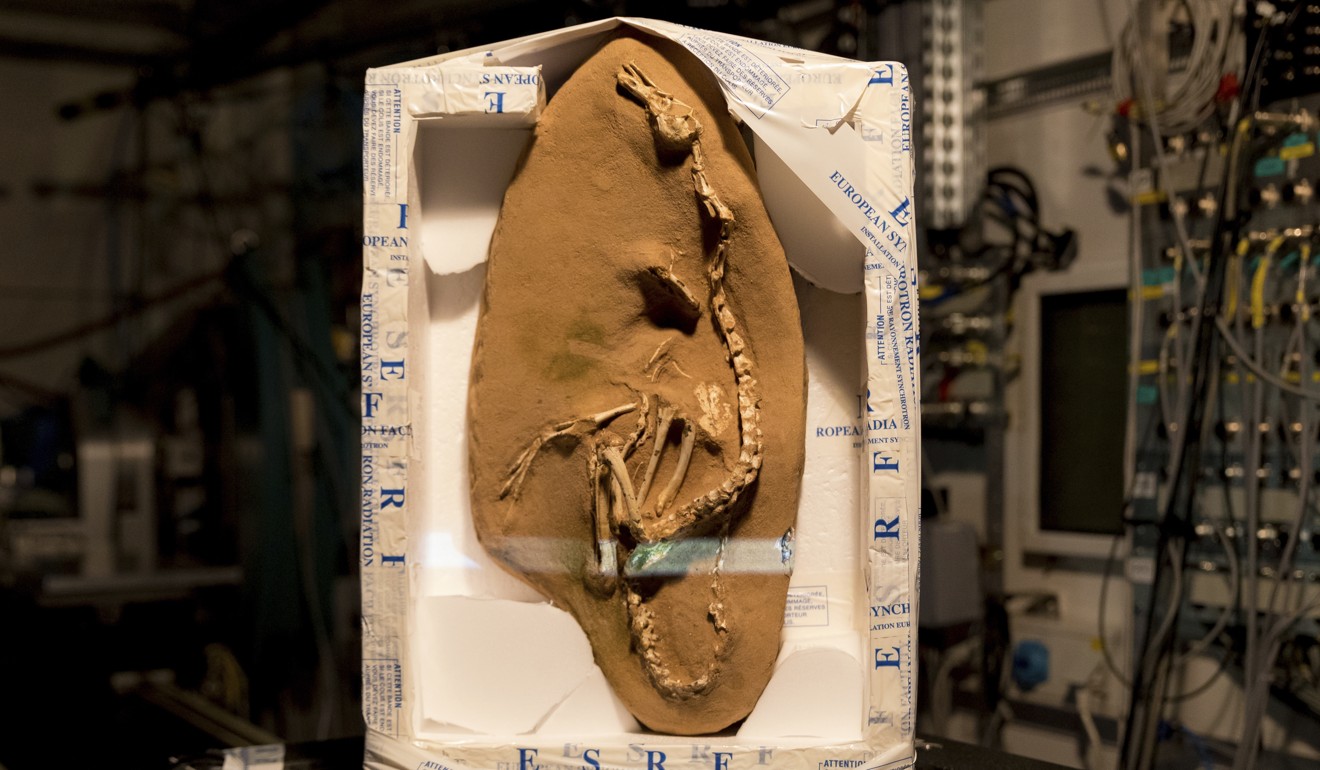
Ridiculous-looking dinosaur resembled duck, crocodile, swan and penguin
Mongolian fossil was so absurd that expert initially assumed it was a fake, before proving otherwise
With a bill like a duck but teeth like a crocodile, a swanlike neck and lethal claws, a newly identified dinosaur species looks like something Dr Seuss dreamed up.
It also had flippers like a penguin, and while it walked like an ostrich it could also swim. It is the first time swimming ability has been identified in a two-legged, meat-eating dinosaur.
The tiny creature, only about 45cm tall, roamed 75 million years ago in what is now Mongolia. Its full curled-up skeleton was found in a sandstone rock.
“It’s such a peculiar animal,” said Dennis Voeten, a palaeontology researcher at Palacky University in the Czech Republic. “It combines different parts we knew from other groups into this one small animal.”

Assuming it was a fake instead of starting assuming that the fossil is genuine was the most appropriate way to start the investigation of such a bizarre fossil
Palaeontologist Kristi Curry Rogers of Macalester College in St Paul, Minnesota, who didn’t participate in the study, called it “a pretty crazy chimera: a swan neck and dinosaur body, but with a mouthful of tiny teeth and hands and feet that look like they might be good for swimming.”
Its mash-up body let it run and hunt on the ground and fish in fresh water, said study co-author Paul Tafforeau. He is a palaeontologist at the ESRF, known as the European Synchrotron in Grenoble, France, a powerful X-ray generator where numerous tests were made on the fossil.
Lead author Andrea Cau, a palaeontologist at the Geological Museum Capellini in Bologna, Italy, said he was at first highly suspicious about the fossil’s authenticity, both because of its appearance and the fact that the rock containing the skeleton had been smuggled out of Mongolia and left in a private collector’s hands.
“I asked myself, ‘Is this a real, natural skeleton, or an artefact, a chimera? If this is a fake, how could I demonstrate it?’” Cau said in an email. “Assuming it was a fake instead of starting assuming that the fossil is genuine was the most appropriate way to start the investigation of such a bizarre fossil.”

Even though the creature wasn’t dreamed up by Dr Seuss, it got a blessing from a Dr Sues.
Hans Sues, a palaeontologist at the Smithsonian Institution who wasn’t part of the research, praised the work and said it “shows again how amazingly diverse dinosaurs were.”

